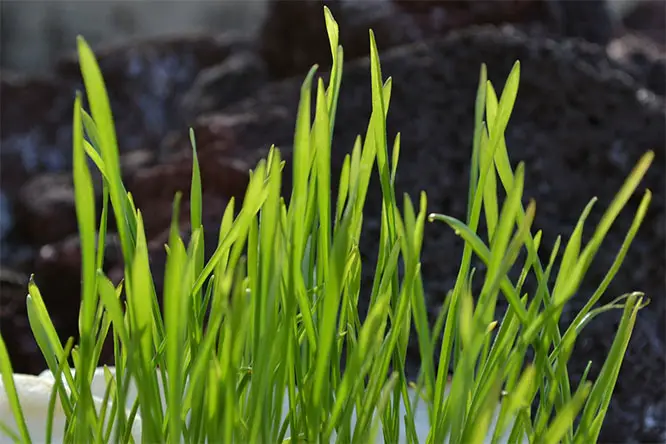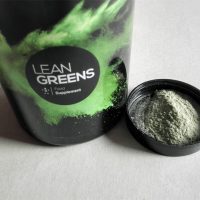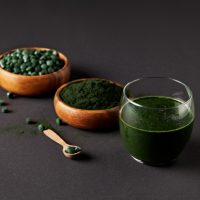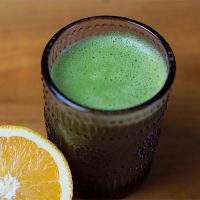I’m sure a lot of you have heard of wheatgrass and how beneficial it is for your body. In fact, I always find it in my local health stores, which made me wonder what it is and what it can do for my health. Many of you know that wheatgrass is a beneficial grass with lots of vitamins, but what exactly does it do for our health and how should you consume it?

I spent some time researching about wheatgrass and its nutritional benefits, as well as its side effects. Read on to learn everything you need to know about wheatgrass, what it can do for your health and what you can expect from it.
What Is Wheatgrass?
Wheatgrass is a type of grass taken from the above-ground portion of a wheat plant, which is called ‘tritium aestivum’. As the name suggests, it resembles grass but it is gluten-free, unlike the plant it comes from.
Usually, wheat plants are found and grown in mild climates across the United States and Europe, either outdoors or indoors. You can also plant wheatgrass yourself by putting wheat seeds into the water, letting them grow and then harvest its leaves when they are ready.
You can consume wheatgrass on its own through blending it or combine it with juices or supplements for more nutrition and taste.
Wheatgrass Nutrition
We all need hundreds of different vitamins and minerals to stay healthy and wheatgrass is full of those beneficial nutrients.
One of the most important and evident nutrients you can find in the wheatgrass is chlorophyll, which is what gives it a bright green colour. Chlorophyll contains various vitamins and antioxidants that can benefit your body. It has been shown to reduce inflammation and can help to clean and detoxify your liver.
What’s more, wheatgrass also has a lot of amino acids and enzymes that we need for proper digestion. It’s also very rich in:
- Iron
- Electrolytes (sodium, potassium)
- Vitamins A, C, and E
- Vitamin K
- B vitamins, especially B5
- Magnesium
In addition to the above, wheatgrass also contains zinc, copper, manganese, phosphorus, calcium and selenium.
The grass has a shallow caloric content, with 100 grams containing only 20 calories. It just has two grams of carbs and less than one gram of fat which makes it perfect for those who are trying to lose weight.
Health Benefits of Wheatgrass
You now know all about the vitamins and nutrients wheatgrass contains, but what exactly can they do for your body? Here are the different and popular reasons why the wheatgrass is so beneficial for our health:
Can Reduce Cholesterol and Blood Pressure
This healthy grass can lower the bad cholesterol, which decreases the risk of heart disease. It also lowers blood pressure, improving blood circulation and purifying it to prevent undesirable symptoms such as headaches, fatigue, or chest pain.
Lowers and Regulates Blood Sugar
Wheatgrass can help to regulate blood sugar levels and can even decrease them. However, more human studies are needed to confirm this. There are a few reports of people who have tried wheatgrass and experienced better blood sugar levels – this helped them reduce the symptoms of diabetes.
Reduces Inflammation
Research shows wheatgrass can reduce inflammation. Half a cup of wheatgrass juice a day can help with various forms of inflammation, including fighting off infections from bacteria. This is all thanks to the compounds found in chlorophyll.
Helps With Weight Loss
Many people now use wheatgrass to help them lose weight. This is mainly due to its high fibrous content, which enhances satiety and regulates one’s appetite. Wheatgrass can also help to speed up metabolism. However, all this is only effective if paired with a healthy diet and exercise!
Digestion Aid and Elimination of Toxins
This is one of the most known health benefits – wheatgrass offers high levels of enzymes which can help break down food and absorb nutrients in the body. It’s the reason why wheatgrass is one of the popular ingredients used in detox products; that’s because it cleans your intestines. That way, you experience less bloating, stomach pain and gas. It’s also known to help relieve digestive issues such as constipation and irritable bowel syndrome.
Disease Prevention
Wheatgrass can help prevent certain diseases such as heart conditions, cancer and diabetes. This is because of its high level of antioxidants and enzymes, which are known to regulate blood pressure and sugar, as well as slow down the growth of specific cancers such as oral and colon cancer.
Does Wheatgrass Have Any Side Effects?
While wheatgrass has a range of health benefits, even the healthiest of plants can have side effects, too. However, it depends on how much you take it and if you’re allergic to it.
There are risks of taking wheatgrass if you are allergic to grasses or pollen, as there is sometimes cross-pollination and cross-contamination during harvest. This can cause an allergic reaction which is why it’s best to consult your doctor before taking wheatgrass.
Also, take note that wheatgrass can lower blood sugar levels, which may not be suitable for those who have diabetes as it can cause hypoglycemia. It can also interfere with blood sugar control during and after surgery. You should monitor blood sugar very carefully if you have diabetes and avoid consuming wheatgrass if you have an operation two weeks prior.
Furthermore, there are a few reports of people experiencing constipation and other minor side effects during the first two weeks of consuming wheatgrass juice. It’s recommended to take a small dose (1 teaspoon wheatgrass powder) every day for the first two weeks before increasing the dosage to prevent such symptoms.
Forms of Wheatgrass
I was a bit hesitant to try wheatgrass myself, mainly because it’s really green and I was worried that it would taste too much like grass but actually, it doesn’t taste too bad and you can definitely get used to the taste. Luckily, there are several different forms of wheatgrass available and you don’t even have to stick with a juice if you don’t want to. Here are all the forms and how to consume them:
Fresh Wheatgrass
Like already mentioned before, you can grow wheatgrass yourself, consuming it fresh. Soak the seeds in water and plant it on compost or quality soil. Keep it moist and under partial sunlight and it will be ready after about ten days after planting.
Once harvested, you can juice it to get the most of its vitamins and nutrients. However, you’ll need a quality juicer for that!
You can also consume wheatgrass as a whole, but you will need to spit out the fibrous pulp. It may not be the most convenient or a favourite way, but it’s beneficial for the gums.
Tablets or Pills
You can now find the many vitamins and minerals found in wheatgrass compressed into one tablet or pill which you should take once or twice a day.
Wheatgrass Powder
When purchasing this type of wheatgrass, always buy organic wheatgrass juice powder to ensure the best quality and to avoid certain toxins which are used to process the powder.
Juice or Shot Form
Wheatgrass can be found in different juices or can be juiced on its own, or you can also take it in a shot form, without the sugar or additives. It’s best to take it fresh and without other ingredients.
Out of all the forms of wheatgrass described here, the best way to consume it is through juicing or in a powder form. This is to obtain all its vitamins and nutrients without excessive processing. However, the tablet and pill form still holds its benefits and nutrients.
Where to Buy Wheatgrass?
Wheatgrass is so popular these days so you shouldn’t have trouble finding it in your local health store. However, if you are looking for the best brands and different kinds of wheatgrass, your options may be limited. Fortunately, there are other places where you can buy it too.
Check out your local health food shops and even grocery stores first for wheatgrass capsules, powder, or wheatgrass juice. If you want more variety, then you can also find trusted brands from reputable online organic shops or Amazon. Make sure to do your research on these online shops and brands to ensure that you only get the best!
Wrapping It Up
Wheatgrass has a range of vitamins and nutrients, all of which are known to have lots of health benefits and can help with digestion, haemoglobin count, and even can boost your metabolism to regulate your weight. Through consuming wheatgrass in a juice form or powder form, you’ll be able to reap the most benefits from it.
Hopefully, this article on wheatgrass informed you all about what this kind of grass is and what it can do for you.
If you have any questions or want to share your experiences in consuming wheatgrass, then comment below. Your thoughts are much appreciated.
Related content:
Health benefits of green juice




3 Comments
I haven’t ever thought of trying to use wheatgrass but it has so many health benefits I didn’t know about!
Such an informative and interesting article Petra – thank you so much for sharing it. Have you ever tried adding wheatgrass to a smoothie?
I tried it yes, it makes my smoothie more nutritious.